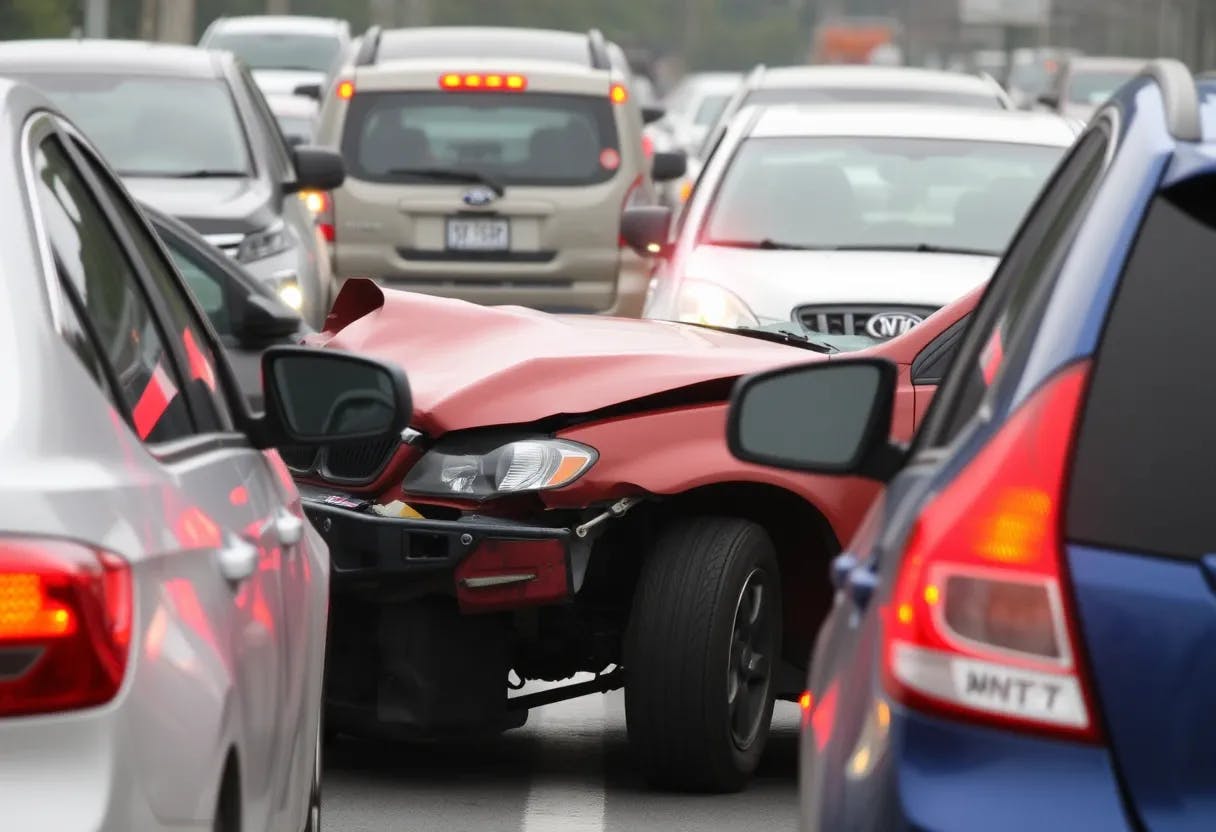Authors:
(1) Mehdi Naderi;
(2) Markos Papageorgiou;
(3) Dimitrios Troullinos;
(4) Iasson Karafyllis;
(5) Ioannis Papamichail.
Table of Links
The Nonlinear Feedback Control
OD Corridors and Desired Orientations
Boundary and Safety Controllers
Appendix A: Collision Detection
Appendix B: Transformed ISO-Distance curves
Appendix D: Safety Controller Details
Appendix E: Controller Parameters
REFERENCES
[1] M. Papageorgiou, C. Diakaki, V. Dinopoulou, A. Kotsialos, and Y. Wang, “Review of road traffic control strategies”, Proceedings of the IEEE, 91, 2003, pp. 2043-2067.
[2] M. Papageorgiou et al., “ITS and Traffic Management”, Transportation (Handbooks in Operations Research and Management Science), Vol. 14), C. Barnhart and G. Laporte, Editors, North-Holland (Elsevier), 2007, pp. 715-774.
[3] C. Diakaki, M. Papageorgiou, I. Papamichail, and I. Nikolos, “Overview and analysis of vehicle automation and communication systems from a motorway traffic management perspective”, Transportation Research Part A, 75, 2015, pp. 147–165.
[4] I. Papamichail et al., “Motorway traffic flow modelling, estimation and control with vehicle automation and communication systems”, Annual Reviews in Control, 48 ,2019, pp. 325-346.
[5] M. Aeberhard, and et al., “Experience, results and lessons learned from automated driving on Germany’s highways”, IEEE Intelligent Transportation Systems Magazine, 7, 2015, pp. 42-57.
[6] M. Papageorgiou, K.S. Mountakis, I. Karafyllis, I. Papamichail, and Y. Wang, “Lane-free artificial-fluid concept for vehicular traffic”, Proceedings of the IEEE, 109, 2021, pp. 114-121.
[7] M. Rostami-Shahrbabaki, S. Weikl, M. Akbarzadeh, and K. Bogenberger, “A two-layer approach for vehicular flocking in lane-free environment”. 11th Triennial Symposium on Transportation Analysis (TRISTAN), 2022.
[8] V.K Yanumula, P. Typaldos, D. Troullinos, M. Malekzadeh, I. Papamichail, and M. Papageorgiou, “Optimal trajectory planning for connected and automated vehicles in lane-free traffic with vehicle nudging”, IEEE Transactions on Intelligent Vehicles, doi: 10.1109/TIV.2023.3241200
[9] I. Faros, V.K. Yanumula, P. Typaldos, I. Papamichail, M. Papageorgiou, “A lateral positioning strategy for connected and automated vehicles in lane-free traffic”, Proceeding of 4th Symposium on Management of Future Motorway and Urban Traffic Systems (MFTS 2022), Dresden, Germany, 2022, pp. 9-17.
[10] D. Troullinos, G. Chalkiadakis, I. Papamichail, and M. Papageorgiou, “Collaborative multiagent decision making for lane-free autonomous driving”, 20th International Conference on Autonomous Agents and Multiagent Systems (AAMAS), online, 2021, pp. 1335-1343.
[11] I. Karafyllis, D. Theodosis, and M. Papageorgiou, “Lyapunov-based twodimensional cruise control of autonomous vehicles on lane-free roads” Automatica, 145, 2022, 110517.
[12] D. Theodosis, I. Karafyllis, and M. Papageorgiou. “Cruise controllers for lane-Free ring-roads based on control Lyapunov functions”, Journal of the Franklin Institute, 2023.
[13] D. Troullinos, G. Chalkiadakis, D. Manolis, I. Papamichail, and M. Papageorgiou, “Lane-free microscopic simulation for connected and automated vehicles”, 24th IEEE International Conference on Intelligent Transportation (ITSC), Indianapolis, IN, USA, 2021, pp. 3292-3299.
[14] M. Sekeran, M. Rostami-Shahrbabaki, A.A. Syed, M. Margreiter, and K. Bogenberger, “Lane-Free traffic: history and state of the art”, IEEE 25th International Conference on Intelligent Transportation Systems (ITSC), Macao, China, 2022, pp. 1037-1042
[15] L. Julia, “There is no such thing as Artificial Intelligence”, Keynote Presentation, 16th IFAC Symposium on Control in Transportation Systems, Lille, France, 8-10 June 2021, https://cts2021.univ-gustaveeiffel.fr/keynote-speakers
[16] Arc de Triomphe and Place Charles de Gaulle, Paris, https://www.reddit.com/r/europe/comments/azcnpg/arc_de_triomphe_and _place_charles_de_gaulle_paris
[17] A. Flannery and T. Datta, “Operational performance measures of American roundabouts”, Transportation Research Record, 1572(1), 1997, pp. 68-75
[18] A. Danesh, W. Ma, C. Yu, R. Hao, and X. Ma, “Optimal roundabout control under fully connected and automated vehicle environment”, IET Intelligent Transportation Systems, 2021, pp. 1-14.
[19] R. Azimi, G. Bhatia, R.R. Rajkumar, and P. Mudalige, “STIP: Spatiotemporal intersection protocols for autonomous vehicles”, ACM/IEEE International Conference on Cyber-physical Systems, 2014, pp. 1-12.
[20] M. Martin-Gasulla, and L. Elefteriadou, “Traffic management with autonomous and connected vehicles at single-lane roundabouts”, Transportation Research Part C: Emerging Technologies, 125, 102964, 2021.
[21] K. Xu, C.G. Cassandras, W. Xiao, “Decentralized time and energy-optimal control of connected and automated vehicles in a roundabout with safety and comfort guarantees”, IEEE Transactions on Intelligent Transportation Systems, 2022, DOI: 10.1109/TITS.2022.3216794.
[22] L. Zhao, A. Malikopoulos, and J. Rios-Torres, “Optimal control of connected and automated vehicles at roundabouts: An investigation in a mixed-traffic environment”, IFAC PapersOnLine, 51(9), 2018, pp. 73-78.
[23] M. Hafizulazwan, B.M. Nor, and T. Namerikawa, “Merging of connected and automated vehicles at roundabout using model predictive control”, 57th annual conference on Society of Instrument and Control Engineers of Japan, 2018.
[24] R. Mohebifard, and A. Hajbabaie, “Connected automated vehicle control in single lane roundabouts”, Transportation Research Part C: Emerging Technologies, 131, 103308, 2021.
[25] I.H. Zohdi, and H.A. Rakha, “Enhancing Roundabout Operations via Vehicle Connectivity”, Journal of the Transportation Research Board, 2381(1), 2013, pp.91-100.
[26] E. Debada, and D. Gillet, “Merging into Single-Lane Roundabouts in the Presence of Uncertainty”, IEEE 21st IEEE International Conference on Intelligent Transportation Systems (ITSC), 2019, pp. 3168–3175.
[27] A. Koumpis, D. Zorzenon, and F. Molinari, “Automation of roundabouts via consensus-based distributed auctions and stochastic model predictive control”, IEEE conference on European Control Conference (ECC), London, United Kingdom, 2022, pp. 14-20.
[28] J.P. Rastelli, and M.S. Penas, “Fuzzy logic steering control of autonomous vehicles inside roundabouts”, Applied Soft Computing, 35, 2015, pp. 662- 669.
[29] N. Ding, X. Meng, W. Xia, D. Wu, L. Xu, and B. Chen, “Multi-vehicle coordinated lane change strategy in the roundabout under internet of vehicles based on game theory and cognitive computing”, IEEE Transactions on Industrial Informatics, 14(8), 2015.
[30] P. Hang, C. Huang, Z. Hu, Y. Xing, and C. Lv, “Decision making of connected automated vehicles at an unsignalized roundabout considering personalized driving behaviours”, IEEE Transactions on Vehicular Technology, vol. 70, no. 5, 2021.
[31] R. Tian, S. Li, N. Li, I. Kolmanovsky, A. Girard, and Y. Yildiz, “Adaptive game-theoretic decision making for autonomous vehicle control at roundabouts”, IEEE Conference on Decision and Control (CDC), 2018, pp. 321-326.
[32] Y. Zhang, B. Gao, L. Guo, H. Guo, and H. Chen, “Adaptive decisionmaking for automated vehicles under roundabout scenarios using optimization embedded reinforcement learning”, IEEE Transactions on Neural Networks and Learning Systems, 32(12), 2020, pp.5526-5538.
[33] B. Németh, Z. Farkas, Z. Antal and P. Gáspár, “Hierarchical control design of automated vehicles for multi-vehicle scenarios in roundabouts,” IEEE European Control Conference (ECC), London, United Kingdom, 2022, pp. 1964-1969
[34] M. Naderi, M. Papageorgiou, I. Karafyllis, I. Papamichail, “Automated vehicle driving on large lane-free roundabouts”, 25th IEEE International Conference on Intelligent Transportation Systems (ITSC), Macao, China, 2022, pp. 1528-1535.
[35] M. Naderi, M. Mavroeidi, I. Papamichail, M. Papageorgiou, “Optimal orientation for automated vehicles on large lane-free roundabouts”, IEEE Conference on Decision and Control (CDC), 2023, accepted.
[36] P. Polack, F. Altche, B. d’Andrea-Novel, and A. de La Fortelle, “The kinematic bicycle model: A consistent model for planning feasible trajectories for autonomous vehicles?”, IEEE Intelligent Vehicles Symposium (IV), 2017, pp.812-818.
[37] D. Theodosis, F.N. Tzortzoglou, I. Karafyllis, I. Papamichail, and M. Papageorgiou, “Sampled-data controllers for autonomous vehicles on Lane-Free Roads”, 30th Mediterranean Conference on Control and Automation (MED), Athens, Greece, 2022, pp. 103-108.
[38] I. Karafyllis, D. Theodosis, M. Papageorgiou, “Analysis and control of a non-local PDE traffic flow model”, International Journal of Control, 95, 2022, pp. 660-678.
[39] I. Karafyllis, D. Theodosis, M. Papageorgiou, “Constructing artificial traffic fluids by designing cruise controllers”, Systems & Control Letters, 167, 2022, 105317.
[40] D. Troullinos, G. Chalkiadakis, D. Manolis, I. Papamichail, M. Papageorgiou, “Extending SUMO for lane-free microscopic simulation of connected and automated vehicles”, SUMO Conference Proceedings, 2022, pp. 95:103.
[41] P. A. Lopez et al., "Microscopic traffic simulation using SUMO", 2018 21st IEEE International Conference on Intelligent Transportation Systems (ITSC), Maui, HI, USA, 2018, pp. 2575-2582.
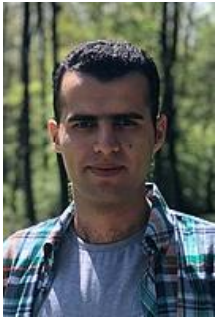
Mehdi Naderi received the B.S. degree in Electrical Engineering from the Hamedan University of Technology, Hamedan, Iran, in 2010, the M.Sc. degree in Electrical Engineering (Control) from the University of Tehran, Tehran, Iran, in 2013, and the Ph.D. degree in Electrical Engineering (Control) from the K.N. Toosi University of Technology (KNTU), Tehran, Iran, in 2019. From 2020 to 2021, he was a lecturer at KNTU. His research interests include autonomous vehicles, control allocation, and fault tolerant control systems. Since May 2021, he has been a post-doc associate with the Dynamic Systems & Simulation Laboratory, Technical University of Crete.
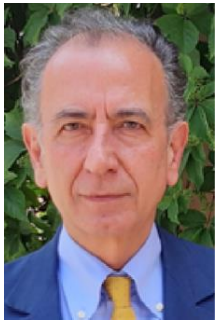
Markos Papageourgiou (Life Fellow, IEEE) was a Professor of Automation with the Technical University of Munich, Germany, from 1988 to 1994. Since 1994 he has been a professor (since 2021 Professor Emeritus) at the Technical University of Crete, Chania, Greece. Since 2021 he has been a Professor at Ningbo University, China. He was a Visiting Professor with the Politecnico di Milano, the Ecole´ Nationale des Ponts et Chaussées, MIT, the Sapienza University of Rome, and Tsinghua University, and a Visiting Scholar with UC Berkeley. His research interests include automatic control and optimisation theory and applications to traffic and transportation systems, water systems, and further areas. He is a fellow of IFAC. He received several distinctions and awards, including the 2020 IEEE Transportation Technologies Award and two ERC Advanced Investigator Grants.
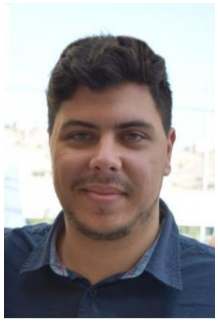
Dimitrios Troullinos received the Diploma degree in Electrical and Computer Engineering from the Technical University of Crete, Chania, Greece, in October 2019. His main research interests lie in the area of Multiagent Systems. From November 2019, he is a research associate and since January 2020 he has been a PhD student with the Dynamic Systems & Simulation Laboratory, Technical University of Crete.
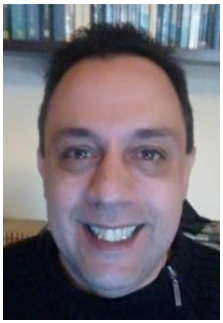
Iasson Karafyllis is a Professor in the Department of Mathematics, NTUA, Greece. He is a coauthor (with Z.-P. Jiang) of the book Stability and Stabilization of Nonlinear Systems, Springer-Verlag London, 2011 and a coauthor (with M. Krstic) of the books Predictor Feedback for Delay Systems: Implementations and Approximations, Birkhäuser, Boston 2017 and Input-toState Stability for PDEs, SpringerVerlag London, 2019. Since 2013 he is an Associate Editor for the International Journal of Control and for the IMA Journal of Mathematical Control and Information. Since 2019 he is an Associate Editor for Systems and Control Letters and Mathematics of Control, Signals and Systems. His research interests include mathematical control theory and nonlinear systems theory.
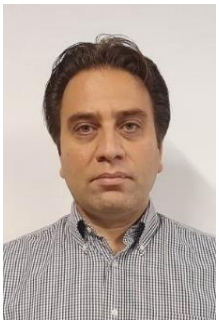
Prof. Ioannis Papamichail is the Director of the Dynamic Systems and Simulation Laboratory, at the Technical University of Crete, Chania, Greece. He received the Dipl. Eng. degree in chemical engineering from the National Technical University of Athens, in 1998 and the M.Sc. degree in process systems engineering and the Ph.D. degree in chemical engineering from Imperial College London, in 1999 and 2002, respectively.
From 1999 to 2002, he was a Research Assistant with the Center for Process Systems Engineering, Imperial College London. He joined the Technical University of Crete in 2004 and has served, since then, at all academic ranks. In 2010, he was a Visiting Scholar with the University of California, Berkeley, CA, USA. He is the author of several technical papers in scientific journals and conference proceedings. His main research interests include automatic control and optimization theory and applications to traffic and transportation systems.
Dr. Papamichail is an Associate Editor for Transportation Research Part C: Emerging Technologies and for IEEE Transactions on Intelligent Transportation Systems. He received the 1998 Eugenidi Foundation Scholarship for Postgraduate Studies and the 2010 Transition to Practice Award from the IEEE Control Systems Society for the development and implementation of ramp metering algorithms, particularly at the Monash Freeway, Melbourne, Australia. He also received the TRA 2012 Best Paper Award for Pillar II (Transport, Mobility and Infrastructure), the Best Freeway Operations Paper in 2014 Award by the Transportation Research Board (TRB) Freeway Operations Committee, and the IEEE-ITS 2020 Best Conference Paper Award.
This paper is available on arxiv under CC 4.0 license.

